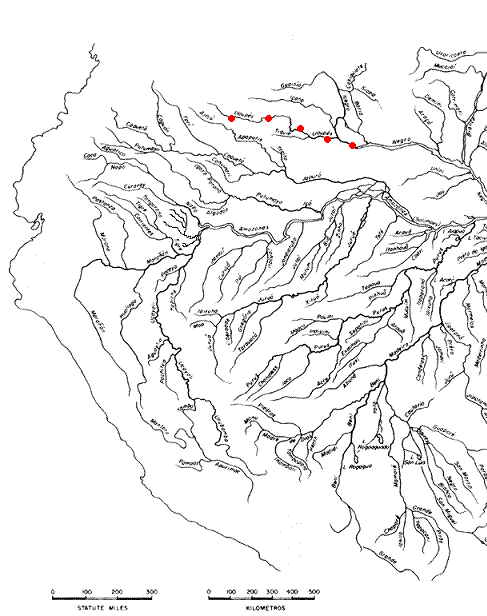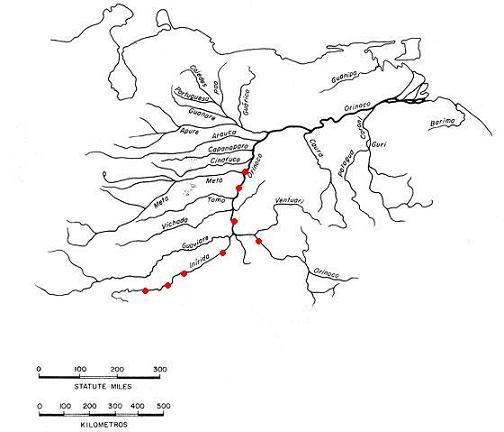|
Synonyms:
Apistogramma sp. Broad band
Apistogramma sp. Morrocoy sewer
Apistogramma sp. Windisch
Apistogramma sp. Sao Gabriel
Apistogramma sp. Kurzlapen-Breitbinden
Apistogramma Klausewitzi (Fahrig, 1971)
Etimologia:
“Breitbinden” or “Broad band” means “broadband” and makes reference to the suborbital line in the male, very wide and marked in comparison another Apistogrammas . Also it shows an preorbital and lateral line very marked. Apistogrammas.
Systematic:
Not this very clearly the classification by Group. It is had to him including in the Group gibbiceps by his similarity with this and personata Apistogramma, but also it has certain morphological similarities with the Group cacatuoides.
At the moment it is included to him in a new group: Group brevis.
(We are awaiting the new conformation of groups to review the list.)
Datz:
To 164-A 167
Order: Perciformes
Family: Cichlidae
Subfamily: Geophaginae
Tribe: Geophagini
Class: Actinopterygii
I generate: Apistogramma
Species: Apistogramma sp. Breitbinden
First import:
This species was concerned for the first time from Venezuela to Germany in 1970.
Distribution:
Originally collected in the high Black River near Sao Gabriel and Rio Uapes (the northwest of Brazil). Later one has captured also in means and Orinoco stop, near the population of Ayacucho Port and in River Inirida. This of Colombia, the west of Venezuela. Maps Apistogramma distribution sp. Breitbinden
Map high Black River

Maps Orinoco high-means Habitat:
Their natural habitat is calm sections of these rivers with abundant submerged forestation where easily they find shelter and place of deosve.
Morphology:
Extended and compressed species laterally, that demonstrates a quite noticeable sexual dimorphism in adult age. The male of about 8 cm, presents/displays a grayish tonality with colorations sea breams in the head and the dorsal fin, as well as a mark as a red spot in opérculo.
The typical lateral line in the sort in this species is present almost at any moment. What but it emphasizes of the male are the fins, usually they are extended emphasizing the volume in the form of lira and coverall the dorsal fin that name to the species due to lardo of the radii gives and coverall the width of the membranes unite that them.
Another remarkable aspect in the males gibbiceps is their heavy lips like the rest of species of the Group. The females however usually do not surpass the 5 cm. Present/display a brown-grayish coloration, happening to a tonality golden-cobrizo at the reproductive time. The fins are cleared and with very tenuous bordering, the pelvic fins are solely completely black.
At reproductive time the female usually shows two black spots of different sizes in the middle of the body, whereas the rest of the time presents/displays the complete lateral line just as the males.
Behavior:
Territorial, although nonaggressive species. Only in reproduction age it would hard show a character but towards another Ciclidos that can coexist in the same aquarium or expelling any intruder who tries to approach the egg-laying place.
It does not touch the plants, nor it realises dangerous excavations. The female unique when preparing the egg-laying place would realise small excavations to adapt it.
Maintenance:
For the maintenance of a pair of this species it would be enough to us with acaurio not very great, a sufficient aquarium of 60 liters sera. In any case and since poligamo is a species of behavior, in the case of maintaining but of a female sera necessary to increase the measures in about a 20-30 liters by female.
The aquarium must be scenery but natural possible, with roots, rocks forming caves and a great one I number of aquatic plants of leaf widens that it provides shade to the aquarium in order that the fish feel like insurances.
Sera also advisable to put in the aquarium a bottom of fine gravel since the females usually make caves to I cheeped of rocks and trunks where to lay eggs.
The species is very sensible to the contamination of the water, reason why we will have to make numerous changes of water and to maintain values of pH between 5,5 6,5, kH <2> Is very recomendale a filtrate with crowd, since the species comes from black and very acid water rivers.
Feeding:
With the exception of wild units that unique tolerated alive food, the reproduced ones in captivity usually do not present/display many problems in the feeding.
They would accept congealed foods red type larva, artemia, papillas specific and with time they will accept freeze-dried and even hojuelas or granules.
Reproduction:
Contributing to the species the necessary conditions of water the courtship will not take in arriving, is really spectacular to see the male dance to the female unfolding his fins to him to the maximum and yet his splendor of colors.
In just a short time the female he begins to prepare the cave where the egg-laying will take place. Once prepared the female he will deposit in the ceiling of the cave about 120 eggs of red color, that will take care of durante36 to 72 hours. They will leave ahead eggs solely if the pH comes near to 5.5º.
Once the eggs eclosionan the female becomes very aggressive leaving would not approach nor the own male, who dedicates itself to defend the outer territory. As of the second day the young fishes already begin to accept nauplios of artemia just eclosionada. In the harems the females usually lay eggs in consecutive days until all the females have laid eggs. Each takes care of of its putting whereas in male defends the superterritory.
A curiosity of this species that marks the difference with another Apistogrammas is that the female once tablet chooses the cave literalemente. A small orifice by where the male covers the entrance leaving only podra not to enter, but podra to introduce the semen so that the female is in charge to fertilize eggs.
Conclusion:
One is a beautiful species that we will be able to maintain comdamente in aquariums not very great and of which we can secure a relatively easy reproduction, at the same time as us it left enchanted with his unfoldings of fins, his colorations and courtship to the female.
Difficulty of maintenance: 4
Difficulty of feeding: 2
Difficulty of reproduction: 3
Global difficulty: 3 |
 留言列表
留言列表